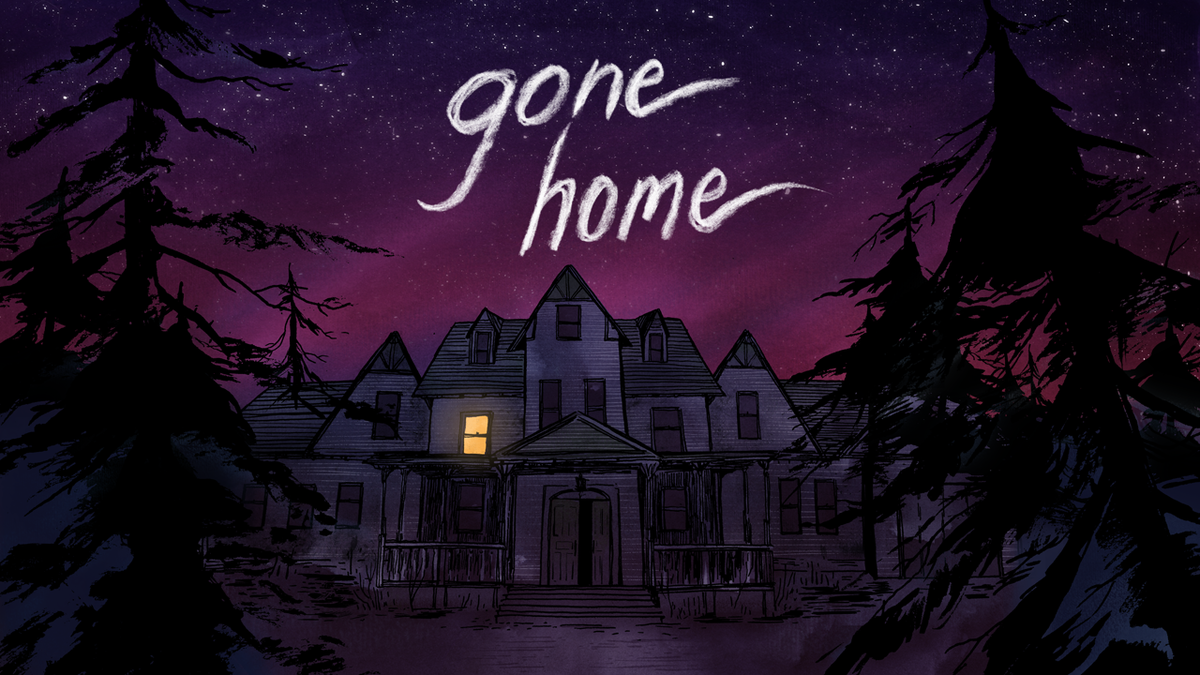I find it interesting how the haunted horror aesthetic of the house in Gone Home is the first noticeable element in the game. The story doesn’t feel like it needs to be creepy. Why didn’t the creators choose to show the story through Sam’s perspective? It could be thought that this aesthetic intends to distract the player from the unfolding queer narrative. However, I think it adds to it. The game intends for the horror to create tension in the player so they’d feel closer to how Sam feels about her queerness.
A house is a comforting safe place where one can always return to. Yet, at the beginning of the game, a note reveals that Sam had run away, suggesting the opposite, especially since it was the middle of the night during a thunderstorm. As you explore the home, you discover you are the only person around. There are no other noises besides your footsteps and the sound of thunder in the distance. You can’t help but feel something has to be wrong.
Despite the house being completely empty, you feel something more is about to happen. It feels as if there has to be a person in one of the rooms. It’s like the house is alive, and the game treats the house as if it was. Moving around, picking up, and interacting with objects trigger a dialogue, rather it be visual, like reading a letter or a message from Sam’s diary playing like the house is trying to speak to you. We perceive Sam through the house, especially since the player has no connection to it, unlike Sam. The only thing haunting the house are the memories of Sam over the past year, which come from her diary, but also items that connect to her sexuality, like her locker or the cassette tape Lonnie gave her.

The game further connects queerness with horror through how her classmates perceive her. Everybody saw Sam as disgusting and weird when learning she lived in the Psycho House. They see her as her house, and later as the queer kid and deface her locker because of it. Sam writes in one of her notes how everybody stares and talks about her as if she wasn’t there. It is as if she were a ghost. There were many other parts where the horror connected to Sam’s queerness. Like when Sam draws Lonnie, who later becomes her girlfriend, to her by how she was the Psycho House Girl. Sam and Lonnie also performed a seance and did ghost hunts in the house together. Both are events that show their developing connection through horror.
One of the reasons horror movies attract me is how many have queer characters in them, most likely as villains or victims. Queerness and horror appear in a game is interesting. In Gone Home, Sam is a victim of homophobia. She felt so trapped in her own home for not having her identity recognized that she felt her best option was to run away. Even though Sam is now living happily with her girlfriend, she will forever be running and resisting her image as the Psycho House Girl until she feels safe enough to return.


I feel that this is a very interesting connection that you have made and I totally agree with you. When we explore the house in “Gone Home,” our spatial exploration lines up with our exploration of the embedded narratives of Sam’s memories, scattered around the house. In this sense, Sam’s identity is connected with the house and thus its “horror” elements. I also like how you pointed out that queerness and horror appearing in a game is interesting, and I wonder if portraying queer characters as villains in games or other forms of media carry negative connotations and lead to negative influences on how the community is perceived.
Another interesting facet to note is that horror has a large queer history. Several early Horror authors such as Matthew Lewis and Francis Lathom were homosexual. However, because being queer was so taboo that they couldn’t even talk about it (and many people still can’t), they had to express their feelings of unease, anxiety, and terror through other means: the horror genre. The choice of horror as a “fake” genre for Gone Home is incredibly deliberate. It is meant to clue you in to what is actually happening much earlier than you find out. However, it also instills in the player the very emotions Sam felt within her own home: unease, unsafe, and scared. When the player finds out what has happened, the fear of horror has gone, but the actual horror remains. That horror being that Sam had to run away from home so she could find a place she felt safe. Gone Home is an incredible example of the interwoven fabric of the horror genre and the LGBTQ+ experience.
Your thought on the tension experienced being analogous to (but not all-encompassing of) Sam’s plight really struck me. I’m intrigued by the game designer’s choice to use an outsider’s perspective to provide insight into Sam’s (whom I view as the game’s real protagonist) complex, emotionally compelling story, though Katie is admittedly a very interested party. Perhaps this choice gives players who, perhaps, wouldn’t feel comfortable or deserving of occupying Sam’s direct perspective an opportunity to become invested in her struggle without feeling like encroaching on an identity that they don’t necessarily identify with.